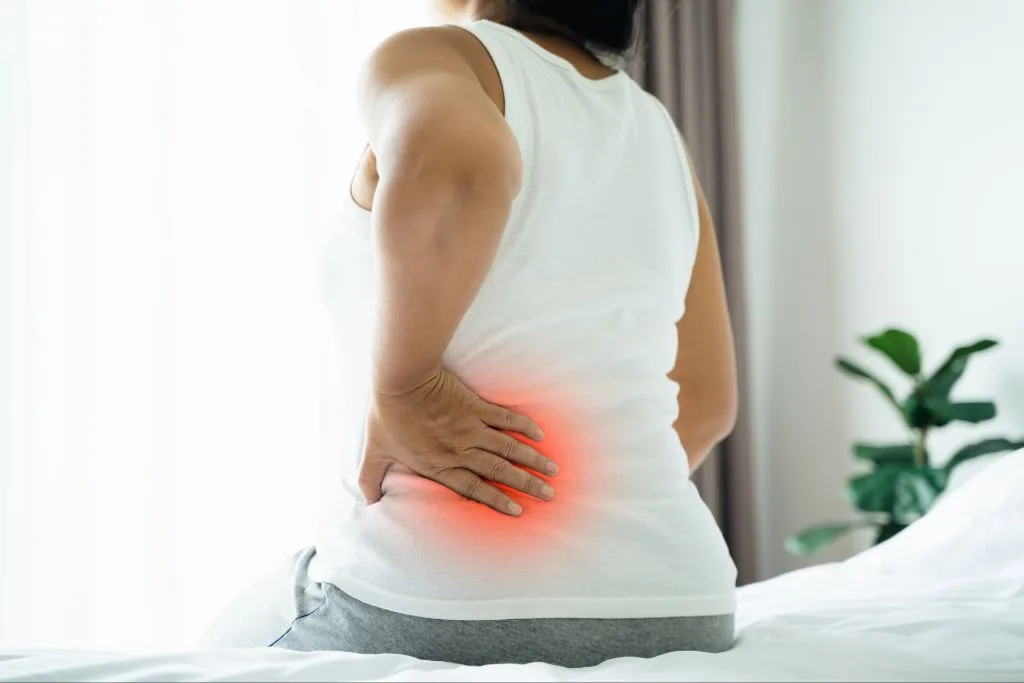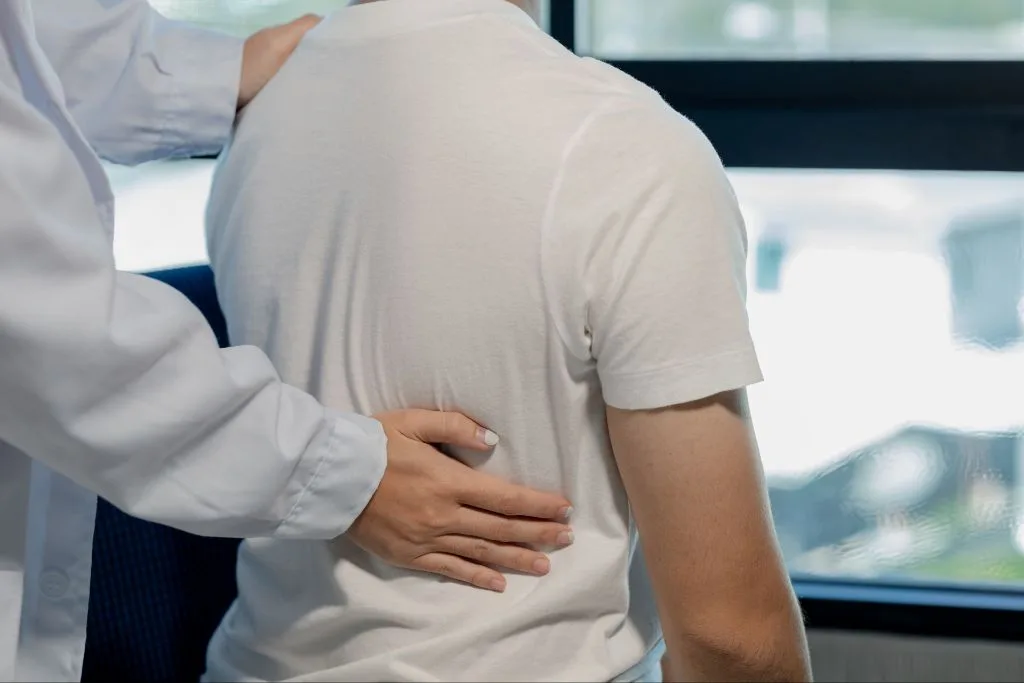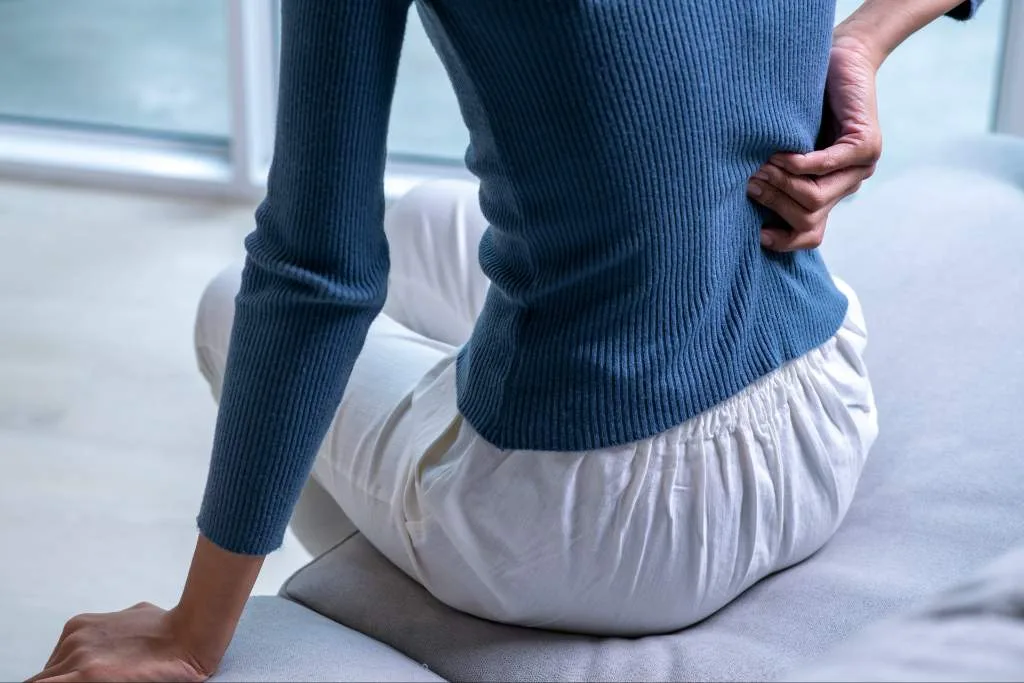Sometimes, lower back pain doesn’t show up right after a car accident. It starts hours or even days later. This delayed pain can be a sign of muscle strain, joint injury, or inflammation that wasn’t immediately noticeable. If you’re experiencing delayed lower back pain after a car accident, it’s important to understand why it happens, what it could mean, and how to take the right steps toward healing. Getting the right care early on can help relieve pain and prevent long-term issues.
Why Lower Back Pain Can Be Delayed After a Car Accident
It’s common for delayed lower back pain after a car accident to show up hours or even days later. Your body releases adrenaline and endorphins during the crash, acting like a natural painkiller that hides discomfort. Once those hormones wear off, you begin to feel the effects. At the same time, soft tissues around your spine may swell, discs can spasm, and inflammation sets in slowly—this buildup is what causes pain to emerge later. Your body’s fight-or-flight response helped you get through the moment, but now the quiet aftermath reveals what’s hiding beneath the surface .
Common Causes of Delayed Lower Back Pain After a Car Crash

After a car accident, your lower back might feel off days later. That’s because different structures in your spine and surrounding tissues can be affected in various ways, even if the pain isn’t immediate. Understanding what’s happening can help you take the right steps.
Muscle Strains and Ligament Sprains
During a collision, your back muscles and ligaments can stretch or wrestle with sudden force, causing micro-tears. These injuries often don’t hurt at first. They swell gradually as your body’s inflammation kicks in over the next few hours or days. The result may be sore muscles and stiffness once the initial shock settles.
Herniated or Bulging Discs
The discs between your vertebrae act as cushions but can shift, bulge, or tear under sudden compression, especially in a crash . They may press on nearby nerves later, producing pain where the nerve runs, but at first, your body’s natural response can hide these changes.
Lumbar Fractures
In more forceful impacts, vertebrae in your lower back may crack or compress, sometimes without immediate symptoms. Though less common, these fractures demand prompt attention since swelling and movement can worsen the damage over time.
Sciatica
If a disc shifts or swelling presses on the sciatic nerve, you can experience nerve irritation. This can stem from a herniated disc or sudden stresses to spinal structures during the crash. Swelling or inflammation may build up gradually. And that nerve irritation often starts after your body calms down.
Delayed Lower Back Pain Symptoms and Signs You Shouldn’t Ignore
After a car accident, it’s normal to feel sore, but some symptoms deserve extra attention. Pain that seems small at first might turn into something more serious if ignored. Pay attention if you notice any of the following:
- Pain That Keeps Getting Worse: If your lower back ache starts mild but increases over time, that suggests swelling or damage isn’t calming down. The longer it fester, the harder recovery can become.
- Numbness or Tingling in the Legs: A disc or swelling pressing on spinal nerves often causes this. It can feel like pins, needling, or loss of sensation, showing nerve irritation that needs prompt attention.
- Weakness When Standing or Walking: If your legs feel wobbly or unable to hold you up, that could indicate nerve or spinal involvement. This isn’t just discomfort. It may be a sign that movement is affected.
- Changes in Bowel or Bladder Control: Needing to go more frequently, having accidents, or trouble emptying may point to serious nerve compression, including cauda equina syndrome. Quiet symptoms like these should be treated urgently.
- Radiating Pain Down One Leg (Sciatica): Sharp, burning, or electric-like pain traveling from your lower back through your buttocks and down a leg is a hallmark of nerve compression. Often linked to herniated discs or swelling.
- Persistent Stiffness or Limited Range of Motion: Beyond soreness, if bending or twisting becomes difficult or painful, it may mean that muscle tears, ligament sprains, or joint issues are setting in.
- Fever, Chills, or Unexplained Weight Loss: Though rare after a simple crash, these signs may suggest infection or deeper medical conditions. If you have back pain combined with fever or loss of weight, that needs thorough evaluation.
Steps to Take If You Have Delayed Lower Back Pain After a Car Accident

Noticing delayed lower back pain means it’s time to act. These steps will guide you toward what matters most, your safe recovery and long-term wellbeing:
1. Get Evaluated by a Medical Provider Right Away
An early check-up helps identify hidden injuries such as fractures or herniated discs before they worsen. Imaging, like X-rays or MRIs, gives clarity on what’s happening and shapes a solid care plan that supports better recovery.
2. Track Your Symptoms
Keep a simple log of when pain appears, what makes it worse, and what brings relief. This shows your doctor patterns that may point to subtle issues and helps them fine-tune treatment tailored just for you.
3. Keep Moving, Gently
Light movement, such as short walks or easy stretches, keeps blood flowing, slows stiffness, and prevents muscles from weakening. These small steps support healing while respecting what your body can handle.
4. Take Over‑The‑Counter Pain Relief If Needed
If pain feels uncomfortable, NSAIDs or acetaminophen can ease soreness and swelling. These can make moving easier and help you better follow provider guidance during early recovery.
5. Avoid Heavy Lifting or Strenuous Activity
Lifting heavy objects or pushing too hard before you’re ready can worsen back strain or delay healing. Stick to gentle movements until a provider confirms you’re cleared for more activity. It protects your progress and supports recovery.
Self‑Care Practices To Help Reduce Your Delayed Lower Back Pain
Recovering at home plays an important role in your healing journey. These approachable self‑care practices are meant to soothe discomfort, promote mobility, and support your spine as it heals.
Ice Then Heat
Start with ice for the first 72 hours to ease inflammation and numb soreness. Then gently switch to heat to improve circulation, relax tight muscles, and help your tissues recover.
Gentle Stretching
Perform light stretches for your hamstrings, hip flexors, and lower back to relieve pressure and reduce muscle stiffness. Moving slowly and mindfully supports flexibility without straining injured areas.
Core Support
Begin gentle core exercises such as pelvic tilts or bridges once cleared by a provider. These help strengthen the muscles that stabilize your spine and prevent extra stress on your lower back.
Maintain Good Posture
Sit and stand with proper alignment, using supportive chairs when needed. Maintaining good posture helps reduce unnecessary stress and strain on your healing back.
Stay Hydrated And Rest Well
Drinking plenty of water supports healing and keeps tissues flexible, while quality rest lets your body recover. Together, hydration and sleep set the groundwork for steady improvement.
Effective Treatment Options for Lower Back Pain
When simple steps aren’t enough, a range of professional treatments can help relieve pain and restore function for delayed lower back pain after a car accident.
Chiropractic Care
A car accident chiropractor uses precise, hands-on techniques to realign the spine, reduce nerve compression, and restore joint mobility after an injury. Treatments like spinal decompression gently relieve pressure on the discs and promote natural healing following the impact of a collision. At Affordable Chiropractic Killeen, we combine these proven methods with on-site imaging and personalized care plans to ensure you receive thoughtful, effective treatment in a warm and welcoming environment.
Physical Therapy
Physical therapists use guided exercises, manual therapy, and movement training to reduce pain and strengthen back and core muscles. This helps improve flexibility and posture to avoid future flare‑ups. Early PT after a crash has been shown to support faster recovery and lower chronic pain risk.
Prescribed Medications
If pain is moderate to severe, your provider may prescribe NSAIDs or muscle relaxers to ease inflammation and loosen tight muscles. This support can make engaging in movement and other therapies easier without discomfort. Medication is used judiciously as part of a broader care plan.
Epidural Steroid Injections
Targeted injections place anti‑inflammatory medication near irritated spinal nerves, reducing swelling and radicular pain such as sciatica. Relief often appears within days and may last several weeks to months, improving your ability to participate in therapy. Not everyone gets long‑term benefit, but it’s an option for managing intense nerve‑related pain.
Find Relief for Delayed Lower Back Pain with Affordable Chiropractic Killeen
That lingering, delayed lower back pain after a car accident often hides in soft tissue swelling, disc stress, or nerve irritation, but with early attention, tracking of symptoms, gentle movement, and simple self-care, many find meaningful relief.
At Affordable Chiropractic Killeen, we understand how daunting post-crash pain can feel. Specializing in chiropractic adjustments, spinal decompression, and comprehensive accident injury care, we create personalized plans rooted in compassion and expertise.
If you’re dealing with delayed lower back pain after a car accident, our team is ready to support you. Schedule an appointment online and take the first step toward healing and moving forward.

